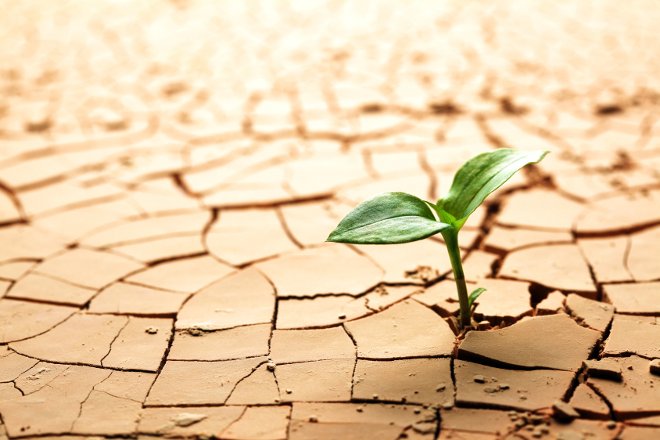Why from Resilience
IRYDE places special emphasis on Resilience because it is the ability of the human being to face adversity and emerge strengthened from it. The resilient person accepts reality, develops positive and creative thinking to act and finds its meaning to advance and improve. Resilience is cultivated in a mental training process that makes neuronal plasticity work in our favor and has a direct impact on our well-being, functioning as a risk prevention system in the emotional sphere. The neuroscience studies of our researchers and their constant updating of knowledge allow us to articulate an effective method, widely tested and scientifically supported, so that people learn to be resilient, to live with acceptance and responsibility, getting used to internalize external factors in a way. constructive to avoid situations of blockage and distress.
The immediate, inalienable benefit is happier people building a better society. Resilience is the great generator of added value also in the business world. The greatest asset of an organization is its human capital, so investing in the emotional development of workers increases their confidence, improves interpersonal relationships, streamlines processes and consequently increases business profits. Furthermore, emotional capital goes beyond sales figures, as it includes such important intangibles as reputation, customer loyalty, new and better communication channels…. Essential aspects for the medium and long-term success of any business.
The analysis of the emotional ROI in the productivity of the companies is the axis of the interventions on emotional intelligence in the organization. If the emotional ROI is positive, it leads to excellent jobs and competent professionals, if on the contrary it is negative, the professional separates from the organization and loses motivation and synergies.
The tendency to value ROI as the maximum valid indicator can be a serious error when what we are evaluating is the emotional health of people. This indicator is not capable of capturing the complexity of the state of people. Entrepreneurs and managers are the key exponents to generate emotional ROI. Poor Emotional Development generates inappropriate climates, low productivity, loss of commitment, little innovation and loss of business competitiveness.
What have we learned so far?
That companies live in an increasingly volatile, uncertain, complex and ambiguous environment (VUCA for its acronym in English). It is not about predicting the unpredictable, but about being prepared to deal with change and, when possible, anticipating and leading it. This scenario is changing the way that companies interact with their ecosystems (customers, employees and collaborators). In addition, it requires constant adaptation. That is why Organizational Resilience is the greatest competitive advantage that companies can have. If crisis situations inhibit the vital processes of the system, it is because we understand them as a form of individual or systemic failure. We are talking about the temporary inability to deal effectively with the complexity generated by the variables in the context of the system.
In opposition, the success of overcoming the critical moment belongs to resilient organizations, groups and individuals, because they are the agents capable of recognizing, adapting and absorbing variations, transformations, alterations, disorders and surprises. Above all, with those interruptions or critical situations that are outside the set of disturbances with which the system can deal normally.
Organizational Resilience is the ability of an organization to face adversities, overcome them by adapting to the new scenario, emerge stronger from the crisis period and turn that ability into a competitive advantage over other companies in the same sector. No organization is safe from going into crisis, but there are those that know how to foresee future risks or simply know how to recognize new circumstances in time and react appropriately, which allows them to constantly adapt. And reaction times are critical. We can understand institutional decay as a disease characterized by stages: more difficult to detect but easier to cure in the early stages, easier to detect but more difficult to cure in its more advanced stages. An organization may appear solid on the outside but already sick on the inside. Healthy companies have the ability to self-examine and renew themselves in terms of personnel, structure, technology and tasks, while everyone involved works harmoniously. Otherwise, they run the risk of tensions that will have a negative impact on the balance sheet. Indirect costs include the following phenomena and their effects (data taken from the Preventive Stress Management in Organizations study. American Psychological Association):
• Loss of vitality, response and recovery
• Low morale, low motivation and high dissatisfaction
• Communication continuity solutions, with a decrease in its frequency and an increase in distortions
• Errors in decision-making, due to poor prosecution capacity;
• Poor quality of labor relations, with distrust, lack of respect and animosity;
• Aggression and violence, both verbal and physical
• Opportunity costs, as stressed workers do not take advantage of opportunities, as they are using the energy at their disposal to cope or survive
How is Organizational Resilience achieved? Like all significant and lasting changes: from the inside out. Organizations are made up of teams, and teams are made up of people. If people don’t change effectively, the organization won’t change either. Ultimately, Resilience is mental health; It is about getting healthier people, building healthier organizations in a healthier society.
There is a WHO alert that indicates stress as ‘a global epidemic with a high cost and the main cause of sick leave’:
Psychological health is responsible for 11% of the consumption of global resources. 80% of workers suffer or have suffered symptoms of stress (according to a survey carried out by Gallup Inc.). Stress is the second most common health problem at work, affecting 22% of workers in the EU-27. A conservative estimate of the costs of work-related stress points to around € 20 billion per year. And even more astonishing is the human suffering that it inflicts on many millions of workers in Europe.
Spain is no stranger to this disease, and the costs for depression and stress treatments amount to no less than 745 million euros per year. 53.5% correspond to direct costs (pharmacological treatments, income), while the remaining 46.5% are due to indirect costs (loss of productivity or temporary inability to work).
According to the VII CinfaSalud Study, endorsed by the Spanish Society for the Study of Anxiety and Stress (SEAS) and published by the EFE Agency, 53% of Spaniards with stress develop a physical illness or mental or emotional problems, and even 12 and a half million people feel stressed frequently or continuously.
• Four out of 10 respondents say that stress causes them problems with concentration and performance.
• 4.6% say that it has made them lose friends.
• 4.3% that has led them to resign from their job.
• A 1.7 declares that it has been the reason for divorce or separation.
• 1.5 percent say it is the cause of job dismissal.
According to the same report, the symptoms that most often affect those who suffer from stress are: irritability (46.8%), anxiety (39.5%), insomnia (38%), headaches and muscle aches (32.2%). ) and physical fatigue (29.9%). Stress affects women more often than men, since one in two (48.7%) report feeling it frequently or continuously, compared to one in three men (31.5%). Those under 45 years of age present a higher degree of stress than those who have exceeded that age.
Students are the ones who most indicate suffering from stress (55.6%), followed by people looking for their first job (50.7%), and thirdly, by workers, both employed and self-employed (41, 4% in both cases).
Family factors (74.3%) generate more stress than economic factors (49.7%). Among those who suffer stress, 50.9% attribute it to excess activities and lack of time, and the following causes are fatigue or sleep (46.2%), work conflicts (43.2%), own illness or Of a relative (41.4%) and emotional problems (40%).
New technologies, the study points out, are also a source of stress. Almost 30% say so. 68.2% place the coordinates of this stress in the impossibility of “disconnecting”. For 54.6% it is the need for an immediate response that generates stress, and for 33% the fear of addiction or dependence.
Faced with these data, Resilience is constituted as the ability to adequately resist and cope with stress, since resilient people identify the demands of stressful events, apply problem-solving strategies and flexibly manage their emotional response, managing negative emotions and Taking advantage of the positive ones to keep your motivation.



